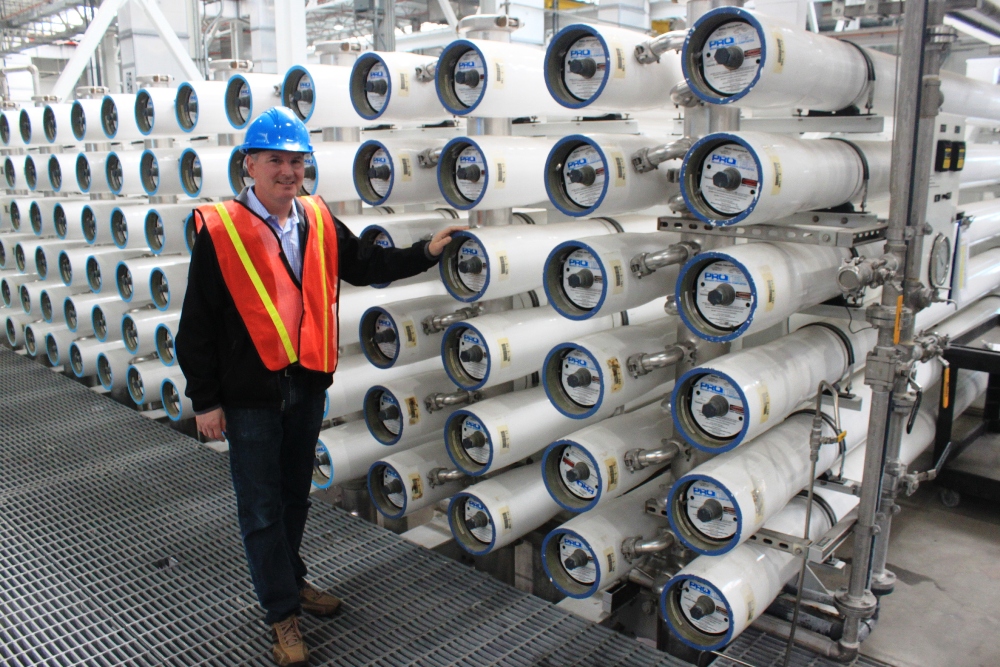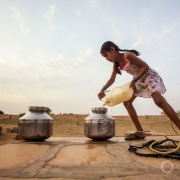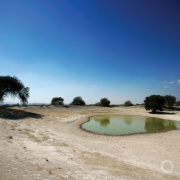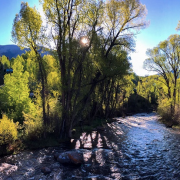2016 Election: Water on the Ballot
Voters choose measures on bottled water regulation, government spending, and more.

On November 8, voters in Alabama, California, Missouri, Oklahoma and other states will vote on ballot initiatives related to water. Photo © J. Carl Ganter / Circle of Blue
By Brett Walton, Circle of Blue
Clinton v. Trump is the main draw for the November 8 election, but down the ballot voters in several states will be asked to approve or reject policies and spending measures that affect water supplies.
California residents, for instance, could alter the approval process for large infrastructure projects, while Washington voters have a chance to usher in the country’s first state carbon tax. Other state and county proposals seek tax extensions or public bonds for water quality improvements.
The ballot, however, is more notable this year for what is missing. There are no blockbuster bond initiatives as there were in California in 2014 and Texas in 2013. In addition, several high-profile measures did not receive enough valid signatures to qualify. These include a petition in Michigan to ban fracking, two measures in Colorado to limit fracking, and an attempt in California to redirect $US 8 billion earmarked for high-speed rail to reservoir and dam projects. Supporters in each case indicated that they will try again on a future ballot.
Below is a list of initiatives that voters will decide on November 8.
State
Alabama: Amendment 2
This amendment would prohibit lawmakers from using state parks revenue for anything other than operating and maintaining state parks. It also allows for the Department of Conservation and Natural Resources to enter into agreements with private businesses to operate “hotels, golf courses, and restaurants” at state parks that already have such facilities. The wording of the amendment has caused concern about privatizing state parks.
California: Proposition 53
California is a state of big public works projects: dams, canals, railways, highways. Proposition 53 proponents want the people to have a say in how money for those types of projects is spent. Their initiative requires a statewide vote for any project that issues more than $US 2 billion in state revenue bonds.
The measure, however, lacks endorsements. Nearly all the major newspapers, Gov. Jerry Brown, labor unions, the Association of California Water Agencies, and even the Chamber of Commerce urge a ‘no’ vote, arguing that the measure is poorly written and removes local control.
California: Proposition 64
Eight states will vote to legalize marijuana, either for recreational or medical purposes. California is the largest and most consequential. Proposition 64 would legalize recreational marijuana for those over the age of 21.
Increasing the legal market for marijuana will likely increase its production, but a state Legislative Analyst’s Office report notes that the magnitude depends on how it is taxed and regulated.
Regulators at the State Water Resources Control Board are preparing for more marijuana farming. “Our strong suspicion is that we’ll see a pretty big bump in people trying to cultivate,” Cris Carrigan, director of the Office of Enforcement, told Circle of Blue. “The question for us is where it will happen.”
Cultivation today is concentrated in the Santa Cruz mountains and in the Eel and Mattole watersheds of Humboldt County. Aerial surveys indicate roughly 100,000 marijuana “patches” on the North Coast counties. A patch can range from 12 plants to more than 5,000. Statewide water consumption for marijuana is a “drop in the bucket” compared to marquee crops such as almonds, Carrigan said. But the local consequences can be severe. Marijuana growers draw from creeks and streams that dwindle during the dry summer months, actions that can strand fish in depleted waterways. The water board encourages growers to invest in tanks to store winter runoff for summer use.
Prop 64 would change the industry though. If the measure passes, Carrigan expects marijuana farming to emerge from the margins and become more like traditional agriculture. Rather than running a discrete business, the cost of inputs and access to adequate water will be primary concerns. “As it becomes more legitimized, the more that market forces are going to drive business decisions,” he said.
California is already developing water use regulations to ensure that growing medical marijuana does not harm rivers and streams. The water board expects to adopt those guidelines in August 2017.
Missouri: Constitutional Amendment 1
Missouri voters have the option to extend for 10 years a sales tax that is used for water and soil conservation and state parks. The tax — one-tenth of one percent — is expected to bring in $US 90 million per year.
Oklahoma: State Question 777
The “right-to-farm” amendment is intended to reduce state interference in agriculture. According to the text of the amendment, the Legislature “shall pass no law which abridges the right of citizens and lawful residents of Oklahoma to employ agricultural technology and livestock production and ranching practices without a compelling state interest.”
Environmental groups are concerned that the measure would make it more difficult for lawmakers to regulate farms to curb water pollution and waste.
Washington: Initiative 732
If supporters of I-732 have their way, Washington will be the first state in the country with a carbon tax. The debate surrounding the measure amounts to a battle of numbers and ideas that has led many groups on the political left, those that would typically support such action, standing in opposition.
The tax would gradually increase, starting at $US 15 per metric ton in 2017 and rising to $US 100 per ton. The initiative is designed not to increase state revenue. Money gained by the carbon tax would be offset by decreasing the sales tax by one percentage point, cutting business taxes, and providing a tax credit to poor families. Whether those numbers even out is one disagreement.
The second dispute is ideological. Opponents say that money raised from the tax should be put to use rather than be offset by tax reductions elsewhere — used for investment in clean energy and to help poor communities adapt to climate change.
Recent polls show a close race with many voters still undecided.
Local
Siskiyou County, California: Measure H
In an attempt to gain more control over water use, the measure changes county groundwater regulation in two ways. First, it requires a groundwater withdrawal permit for all groundwater that will be used outside the county boundary. Second, it requires commercial water bottling operations to acquire a permit. Commercial bottlers are currently exempt.
The ballot measure reflects an ongoing debate in the northern California county over bottled water. Crystal Geyser, a California-based company, is seeking to reopen a bottling facility in the town of Mt. Shasta that was shuttered in 2010. Groups opposed to the facility filed two unsuccessful lawsuits to block its opening.
Siskiyou would not be the first county to exercise tighter control over the bottled water industry. In May, in response to Nestle’s plan to open a $US 50 million facility in the Columbia River Gorge, Oregon’s Hood River County banned commercial water bottling.
Linn County, Iowa: Water and Land Legacy Bonds
The Board of Supervisors is stumping for a $US 40 million bond to be used for flood plain restoration, fish habitat, park trails, and other land conservation or water quality projects. To pass, the 20-year general obligation bond requires 60 percent approval.
Brett writes about agriculture, energy, infrastructure, and the politics and economics of water in the United States. He also writes the Federal Water Tap, Circle of Blue’s weekly digest of U.S. government water news. He is the winner of two Society of Environmental Journalists reporting awards, one of the top honors in American environmental journalism: first place for explanatory reporting for a series on septic system pollution in the United States(2016) and third place for beat reporting in a small market (2014). He received the Sierra Club’s Distinguished Service Award in 2018. Brett lives in Seattle, where he hikes the mountains and bakes pies. Contact Brett Walton












